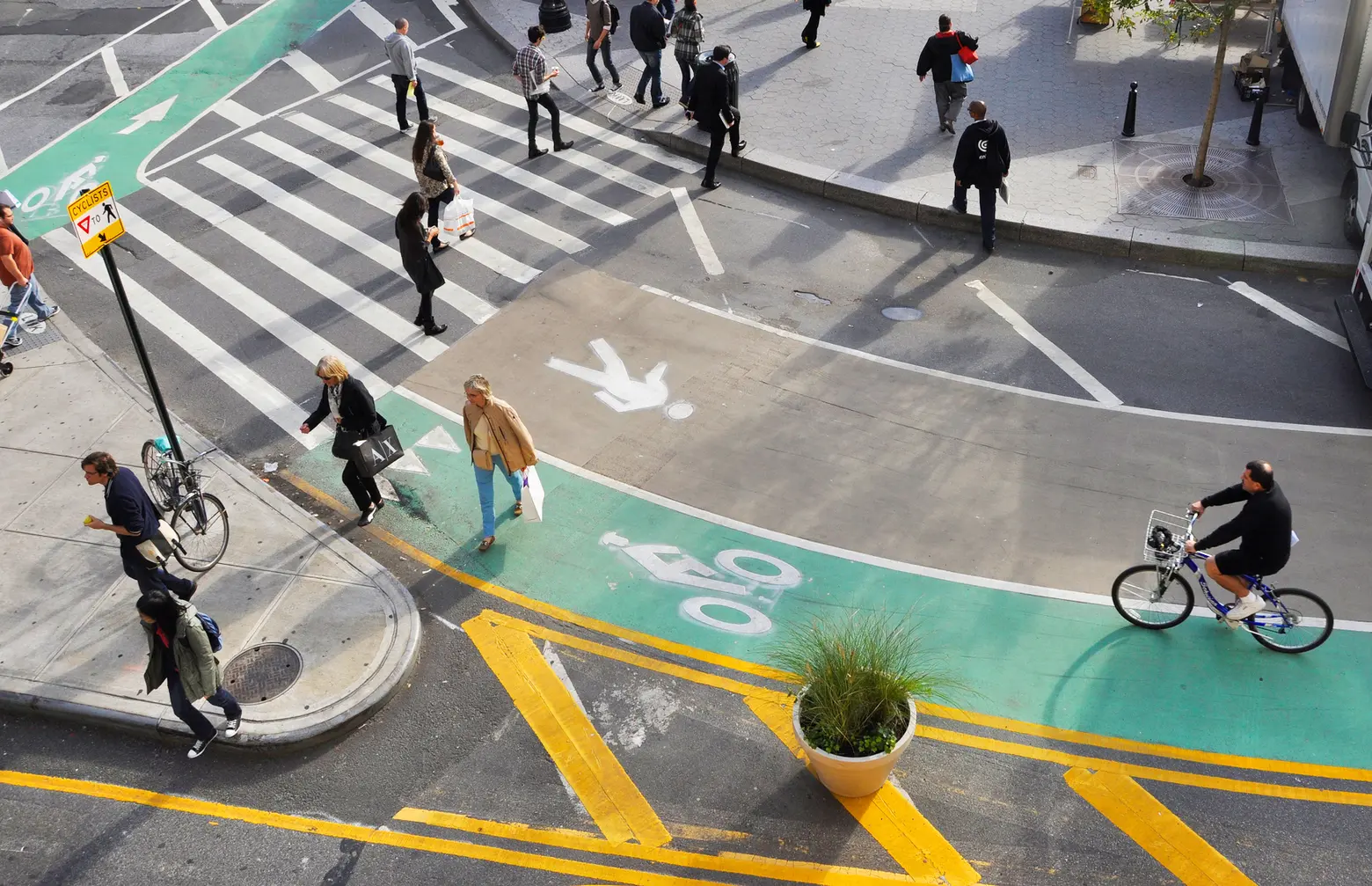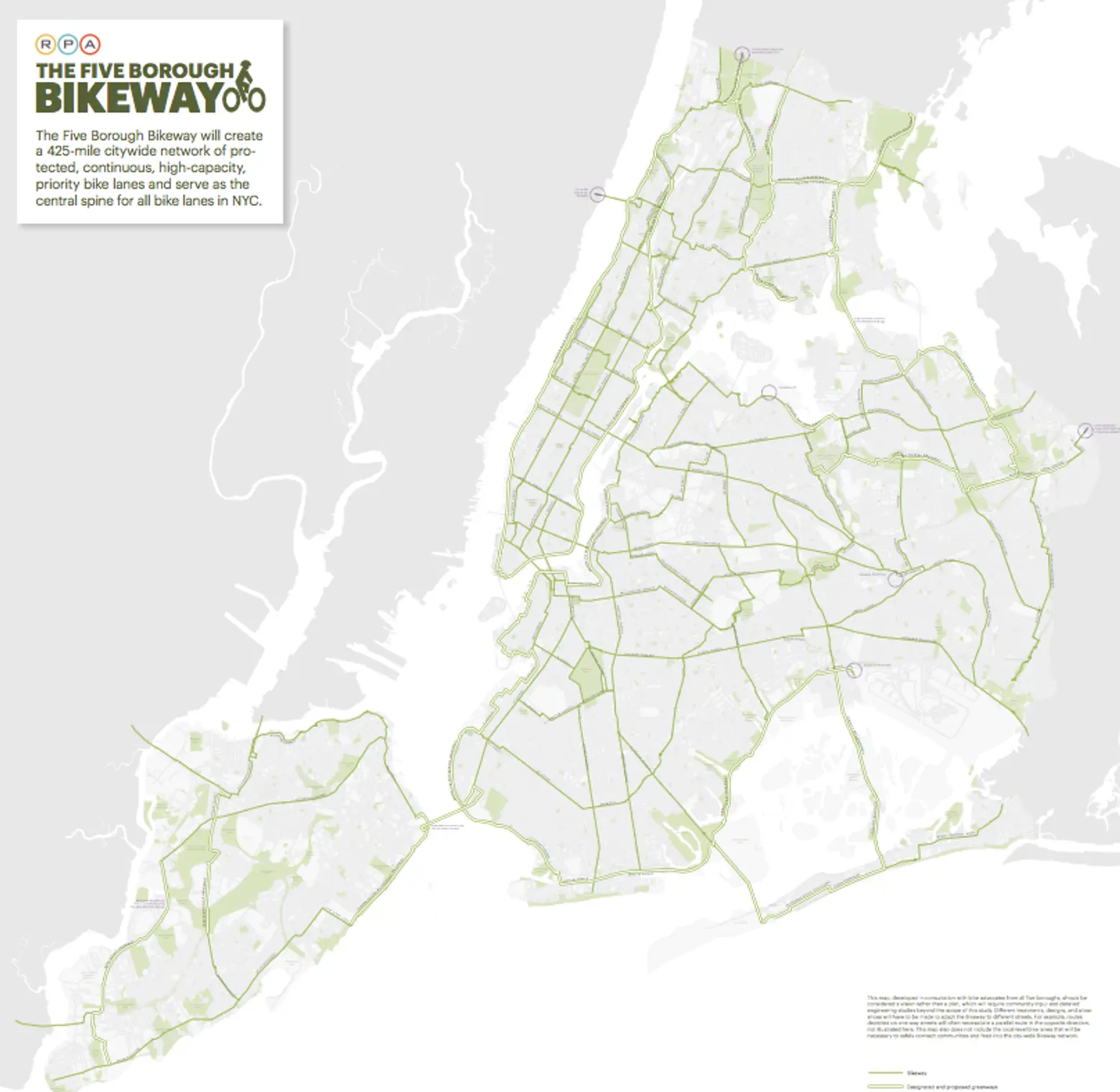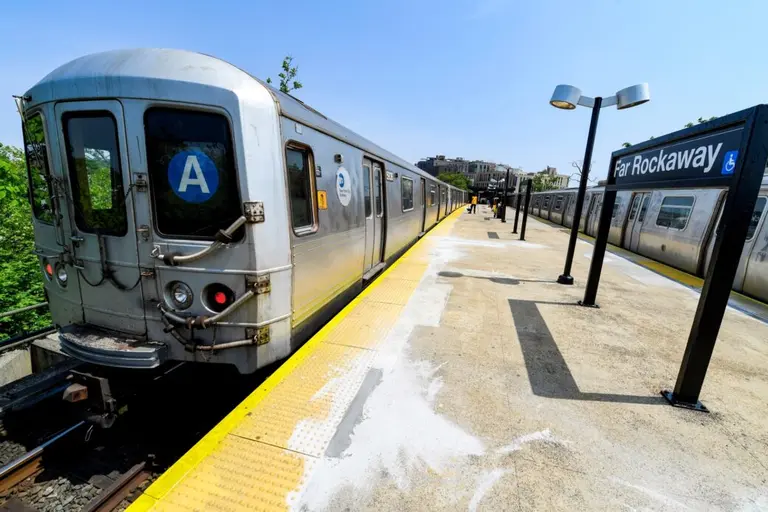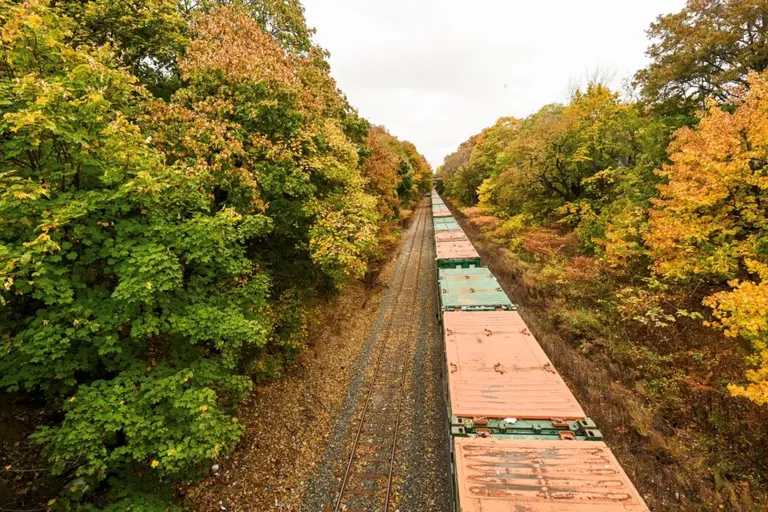New report calls for a 425-mile protected bikeway that would connect NYC’s five boroughs

Current bike lanes by Union Square; Photo courtesy of the NYC Department of Transportation on Flickr
When the coronavirus pandemic hit New York City earlier this year, many New Yorkers swapped the subway for cycling as a more socially distant way to commute. Now as the city enters its COVID-19 recovery phase, a planning group is calling on officials to build a network of protected bike lanes across the five boroughs. The Regional Plan Association (RPA) on Wednesday released a report that details plans for a 425-mile bikeway that could be constructed over the next five years and provide a continuous, safe connection between the boroughs.

Map courtesy of the Regional Plan Association
According to RPA, the first phase of the bikeway plan could be immediately implemented through temporary measures like paint and bollards, with more permanent changes made over time. The group’s Five Borough Bikeway proposal would build on the city’s “Streets Master Plan” to construct 250 miles of protected bike lanes over the next five years, which was approved by the City Council last year. Introduced by Speaker Corey Johnson, the master plan was in response to an uptick in cyclist deaths citywide in 2019.
The report argues the bikeway, which would act as the “central spine” of all bike lanes in the city, would increase bike ridership, reduce car crashes and fatalities, decrease air pollution, and make streets safer for all New Yorkers.
The bike lanes would be physically separated from traffic, unlike a majority of lanes currently found in the city. Of the current 1,200 miles of bike lanes citywide, just 480 miles of lanes are “protected,” or separated from street traffic. The Five Borough Bikeway proposal could involve either two-way bike tracks, paths on either side of a busy street, or in the form of wider “bike boulevards” on residential streets.
“At a time when climate change threatens our communities, congestion and air pollution choke streets and residents, and cyclist deaths are high, the Five Borough Bikeway is the right solution to these multifaceted challenges,” Tom Wright, president of RPA, said in a press release.
“Securing a carbon-free future requires that we change our infrastructure so that biking can become as accessible and common tomorrow as driving is today. To become a world-class biking city, New York must take a leap beyond the status quo and develop a comprehensive and inclusive, citywide approach to cycling infrastructure.”
In addition to providing New Yorkers an alternative to mass transit, bike lanes should be implemented ahead of congestion pricing, set to go into effect in 2021, authors of the report argue. The congestion pricing plan, which would charge cars entering Manhattan south of 60th Street, aims to reduce vehicular traffic.
And the RPA says the bikeway could address the lack of diversity among cyclists by investing in bike infrastructure and safety programs in neighborhoods of color.
“Amidst this horrible pandemic New York City has a rare opportunity to rethink its street space,” Sam Schwartz, founder of Sam Schwartz Engineering, said. “Over 100 years ago we ceded so much space to the car corralling pedestrians into narrow sidewalks and treating cyclists as intruders (when it is they who led the hard roads movement at the turn of last century).RPA’s Five Borough Bikeway report is the blueprint for correcting that while ensuring that a new street system serves all of us regardless of gender, race, income or age.”
RELATED:




























